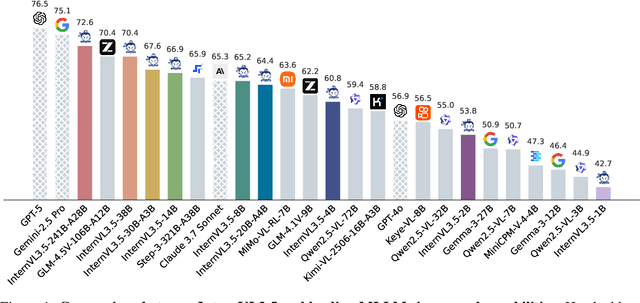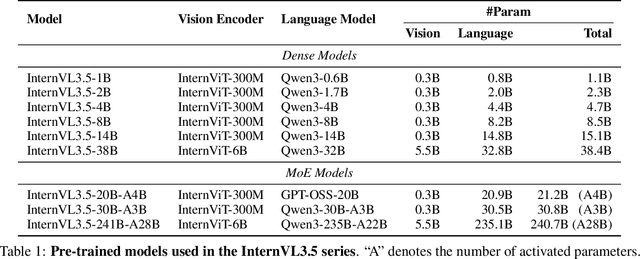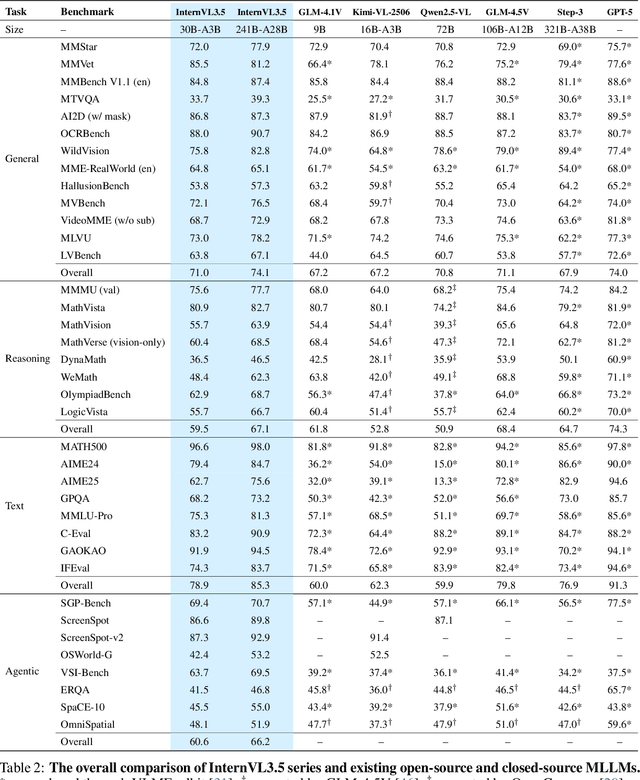Wenhao Li
Policy-Conditioned Policies for Multi-Agent Task Solving
Dec 24, 2025Abstract:In multi-agent tasks, the central challenge lies in the dynamic adaptation of strategies. However, directly conditioning on opponents' strategies is intractable in the prevalent deep reinforcement learning paradigm due to a fundamental ``representational bottleneck'': neural policies are opaque, high-dimensional parameter vectors that are incomprehensible to other agents. In this work, we propose a paradigm shift that bridges this gap by representing policies as human-interpretable source code and utilizing Large Language Models (LLMs) as approximate interpreters. This programmatic representation allows us to operationalize the game-theoretic concept of \textit{Program Equilibrium}. We reformulate the learning problem by utilizing LLMs to perform optimization directly in the space of programmatic policies. The LLM functions as a point-wise best-response operator that iteratively synthesizes and refines the ego agent's policy code to respond to the opponent's strategy. We formalize this process as \textit{Programmatic Iterated Best Response (PIBR)}, an algorithm where the policy code is optimized by textual gradients, using structured feedback derived from game utility and runtime unit tests. We demonstrate that this approach effectively solves several standard coordination matrix games and a cooperative Level-Based Foraging environment.
PoseMoE: Mixture-of-Experts Network for Monocular 3D Human Pose Estimation
Dec 18, 2025Abstract:The lifting-based methods have dominated monocular 3D human pose estimation by leveraging detected 2D poses as intermediate representations. The 2D component of the final 3D human pose benefits from the detected 2D poses, whereas its depth counterpart must be estimated from scratch. The lifting-based methods encode the detected 2D pose and unknown depth in an entangled feature space, explicitly introducing depth uncertainty to the detected 2D pose, thereby limiting overall estimation accuracy. This work reveals that the depth representation is pivotal for the estimation process. Specifically, when depth is in an initial, completely unknown state, jointly encoding depth features with 2D pose features is detrimental to the estimation process. In contrast, when depth is initially refined to a more dependable state via network-based estimation, encoding it together with 2D pose information is beneficial. To address this limitation, we present a Mixture-of-Experts network for monocular 3D pose estimation named PoseMoE. Our approach introduces: (1) A mixture-of-experts network where specialized expert modules refine the well-detected 2D pose features and learn the depth features. This mixture-of-experts design disentangles the feature encoding process for 2D pose and depth, therefore reducing the explicit influence of uncertain depth features on 2D pose features. (2) A cross-expert knowledge aggregation module is proposed to aggregate cross-expert spatio-temporal contextual information. This step enhances features through bidirectional mapping between 2D pose and depth. Extensive experiments show that our proposed PoseMoE outperforms the conventional lifting-based methods on three widely used datasets: Human3.6M, MPI-INF-3DHP, and 3DPW.
Cross-Modal Unlearning via Influential Neuron Path Editing in Multimodal Large Language Models
Nov 10, 2025Abstract:Multimodal Large Language Models (MLLMs) extend foundation models to real-world applications by integrating inputs such as text and vision. However, their broad knowledge capacity raises growing concerns about privacy leakage, toxicity mitigation, and intellectual property violations. Machine Unlearning (MU) offers a practical solution by selectively forgetting targeted knowledge while preserving overall model utility. When applied to MLLMs, existing neuron-editing-based MU approaches face two fundamental challenges: (1) forgetting becomes inconsistent across modalities because existing point-wise attribution methods fail to capture the structured, layer-by-layer information flow that connects different modalities; and (2) general knowledge performance declines when sensitive neurons that also support important reasoning paths are pruned, as this disrupts the model's ability to generalize. To alleviate these limitations, we propose a multimodal influential neuron path editor (MIP-Editor) for MU. Our approach introduces modality-specific attribution scores to identify influential neuron paths responsible for encoding forget-set knowledge and applies influential-path-aware neuron-editing via representation misdirection. This strategy also enables effective and coordinated forgetting across modalities while preserving the model's general capabilities. Experimental results demonstrate that MIP-Editor achieves a superior unlearning performance on multimodal tasks, with a maximum forgetting rate of 87.75% and up to 54.26% improvement in general knowledge retention. On textual tasks, MIP-Editor achieves up to 80.65% forgetting and preserves 77.9% of general performance. Codes are available at https://github.com/PreckLi/MIP-Editor.
RECALL: REpresentation-aligned Catastrophic-forgetting ALLeviation via Hierarchical Model Merging
Oct 23, 2025Abstract:We unveil that internal representations in large language models (LLMs) serve as reliable proxies of learned knowledge, and propose RECALL, a novel representation-aware model merging framework for continual learning without access to historical data. RECALL computes inter-model similarity from layer-wise hidden representations over clustered typical samples, and performs adaptive, hierarchical parameter fusion to align knowledge across models. This design enables the preservation of domain-general features in shallow layers while allowing task-specific adaptation in deeper layers. Unlike prior methods that require task labels or incur performance trade-offs, RECALL achieves seamless multi-domain integration and strong resistance to catastrophic forgetting. Extensive experiments across five NLP tasks and multiple continual learning scenarios show that RECALL outperforms baselines in both knowledge retention and generalization, providing a scalable and data-free solution for evolving LLMs.
CCF: A Context Compression Framework for Efficient Long-Sequence Language Modeling
Sep 11, 2025Abstract:Scaling language models to longer contexts is essential for capturing rich dependencies across extended discourse. However, na\"ive context extension imposes significant computational and memory burdens, often resulting in inefficiencies during both training and inference. In this work, we propose CCF, a novel context compression framework designed to enable efficient long-context modeling by learning hierarchical latent representations that preserve global semantics while aggressively reducing input redundancy. CCF integrates segment-wise semantic aggregation with key-value memory encoding, forming compact representations that support accurate reconstruction and long-range understanding. To further enhance scalability, we introduce a training-efficient optimization strategy that couples incremental segment decoding with sparse reservoir sampling, substantially reducing memory overhead without degrading performance. Empirical results on multiple long-context language modeling benchmarks demonstrate that CCF achieves competitive perplexity under high compression ratios, and significantly improves throughput and memory efficiency compared to existing approaches. These findings highlight the potential of structured compression for scalable and effective long-context language modeling.
H$_{2}$OT: Hierarchical Hourglass Tokenizer for Efficient Video Pose Transformers
Sep 08, 2025



Abstract:Transformers have been successfully applied in the field of video-based 3D human pose estimation. However, the high computational costs of these video pose transformers (VPTs) make them impractical on resource-constrained devices. In this paper, we present a hierarchical plug-and-play pruning-and-recovering framework, called Hierarchical Hourglass Tokenizer (H$_{2}$OT), for efficient transformer-based 3D human pose estimation from videos. H$_{2}$OT begins with progressively pruning pose tokens of redundant frames and ends with recovering full-length sequences, resulting in a few pose tokens in the intermediate transformer blocks and thus improving the model efficiency. It works with two key modules, namely, a Token Pruning Module (TPM) and a Token Recovering Module (TRM). TPM dynamically selects a few representative tokens to eliminate the redundancy of video frames, while TRM restores the detailed spatio-temporal information based on the selected tokens, thereby expanding the network output to the original full-length temporal resolution for fast inference. Our method is general-purpose: it can be easily incorporated into common VPT models on both seq2seq and seq2frame pipelines while effectively accommodating different token pruning and recovery strategies. In addition, our H$_{2}$OT reveals that maintaining the full pose sequence is unnecessary, and a few pose tokens of representative frames can achieve both high efficiency and estimation accuracy. Extensive experiments on multiple benchmark datasets demonstrate both the effectiveness and efficiency of the proposed method. Code and models are available at https://github.com/NationalGAILab/HoT.
Spotlight Attention: Towards Efficient LLM Generation via Non-linear Hashing-based KV Cache Retrieval
Aug 27, 2025



Abstract:Reducing the key-value (KV) cache burden in Large Language Models (LLMs) significantly accelerates inference. Dynamically selecting critical KV caches during decoding helps maintain performance. Existing methods use random linear hashing to identify important tokens, but this approach is inefficient due to the orthogonal distribution of queries and keys within two narrow cones in LLMs. We introduce Spotlight Attention, a novel method that employs non-linear hashing functions to optimize the embedding distribution of queries and keys, enhancing coding efficiency and robustness. We also developed a lightweight, stable training framework using a Bradley-Terry ranking-based loss, enabling optimization of the non-linear hashing module on GPUs with 16GB memory in 8 hours. Experimental results show that Spotlight Attention drastically improves retrieval precision while shortening the length of the hash code at least 5$\times$ compared to traditional linear hashing. Finally, we exploit the computational advantages of bitwise operations by implementing specialized CUDA kernels, achieving hashing retrieval for 512K tokens in under 100$\mu$s on a single A100 GPU, with end-to-end throughput up to 3$\times$ higher than vanilla decoding.
MOCHA: Discovering Multi-Order Dynamic Causality in Temporal Point Processes
Aug 26, 2025Abstract:Discovering complex causal dependencies in temporal point processes (TPPs) is critical for modeling real-world event sequences. Existing methods typically rely on static or first-order causal structures, overlooking the multi-order and time-varying nature of causal relationships. In this paper, we propose MOCHA, a novel framework for discovering multi-order dynamic causality in TPPs. MOCHA characterizes multi-order influences as multi-hop causal paths over a latent time-evolving graph. To model such dynamics, we introduce a time-varying directed acyclic graph (DAG) with learnable structural weights, where acyclicity and sparsity constraints are enforced to ensure structural validity. We design an end-to-end differentiable framework that jointly models causal discovery and TPP dynamics, enabling accurate event prediction and revealing interpretable structures. Extensive experiments on real-world datasets demonstrate that MOCHA not only achieves state-of-the-art performance in event prediction, but also reveals meaningful and interpretable causal structures.
InternVL3.5: Advancing Open-Source Multimodal Models in Versatility, Reasoning, and Efficiency
Aug 25, 2025



Abstract:We introduce InternVL 3.5, a new family of open-source multimodal models that significantly advances versatility, reasoning capability, and inference efficiency along the InternVL series. A key innovation is the Cascade Reinforcement Learning (Cascade RL) framework, which enhances reasoning through a two-stage process: offline RL for stable convergence and online RL for refined alignment. This coarse-to-fine training strategy leads to substantial improvements on downstream reasoning tasks, e.g., MMMU and MathVista. To optimize efficiency, we propose a Visual Resolution Router (ViR) that dynamically adjusts the resolution of visual tokens without compromising performance. Coupled with ViR, our Decoupled Vision-Language Deployment (DvD) strategy separates the vision encoder and language model across different GPUs, effectively balancing computational load. These contributions collectively enable InternVL3.5 to achieve up to a +16.0\% gain in overall reasoning performance and a 4.05$\times$ inference speedup compared to its predecessor, i.e., InternVL3. In addition, InternVL3.5 supports novel capabilities such as GUI interaction and embodied agency. Notably, our largest model, i.e., InternVL3.5-241B-A28B, attains state-of-the-art results among open-source MLLMs across general multimodal, reasoning, text, and agentic tasks -- narrowing the performance gap with leading commercial models like GPT-5. All models and code are publicly released.
Differentiable Adaptive Kalman Filtering via Optimal Transport
Aug 09, 2025Abstract:Learning-based filtering has demonstrated strong performance in non-linear dynamical systems, particularly when the statistics of noise are unknown. However, in real-world deployments, environmental factors, such as changing wind conditions or electromagnetic interference, can induce unobserved noise-statistics drift, leading to substantial degradation of learning-based methods. To address this challenge, we propose OTAKNet, the first online solution to noise-statistics drift within learning-based adaptive Kalman filtering. Unlike existing learning-based methods that perform offline fine-tuning using batch pointwise matching over entire trajectories, OTAKNet establishes a connection between the state estimate and the drift via one-step predictive measurement likelihood, and addresses it using optimal transport. This leverages OT's geometry - aware cost and stable gradients to enable fully online adaptation without ground truth labels or retraining. We compare OTAKNet against classical model-based adaptive Kalman filtering and offline learning-based filtering. The performance is demonstrated on both synthetic and real-world NCLT datasets, particularly under limited training data.
 Add to Chrome
Add to Chrome Add to Firefox
Add to Firefox Add to Edge
Add to Edge